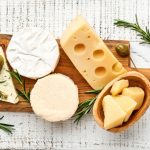
Careful site selection allows Graham Parks to use outwintering as an entry for a reseed.
It also saves him £35 a head on winter housing and feeding costs, maintaining his simple beef system based around grazed grass, baled silage and minimal concentrates.
Graham has 600 dairy-beef cattle to feed each winter, finishing at 24-32 months, at Overbank Farm near Macclesfield. He only has winter housing for 100 cattle in cubicles and this suits his smaller group of heifers.
Each year, he earmarks 4ha (10 acres) for a spring reseed and uses this to grow deferred grass to outwinter his rising two-year-old cattle (R2).
“I work out which is the poorest field on yield and reseed it in March or April when conditions permit; sometimes it’s one that has been burned due to drought.
Overbank farm facts
- Grazing platform: 129ha
- Grow 14-15t/ha dry matter grass
- Sandy loam soils
- 146m above sea level
- Rainfall 990mm
Three-fence system
His advice to anyone considering outwintering is to have three electric fences: the back wire, the wire the cattle graze to, and the wire for the next feed.
“This means I can take the fence up and cattle are not running up and down poaching while I move the fence for their next allocation. They go straight to graze,” he explains.
“Also, if cattle get out, it’s only onto the next feed. The back fence is important, to prevent overpoaching. I’d say know your farm and be selective about the area to outwinter on.
“Have a good supply of water and aim for good-quality silage bales: mine are good enough for dairy cows.”

© MAG/Shirley Macmillan
Preparing for winter
To set up deferred grass, Graham takes first cut in mid-June as a surplus from the grazing platform, which has already been grazed twice.
A second cut is made at the end of July. Both are of similar quality, with more than 50% dry matter.
The outwintering field is then fertilised with 60kg N/ha in mid-August and last grazed in early September before being closed to grow grass.
Bales for outwintering are stacked in the middle of the field.
With a good water supply across the platform, Graham sets up troughs on the outwintering block at the start of winter.
Then he sets up his three fences and stocks 140 R2 bullocks. Cattle strip-graze from 1 November until 1 March, with the fence moved on alternate days.
In addition, 10-12 bales are fed in ring feeders set in the grass each time the electric fence is moved.
“It takes one to one-and-a-half hours to move the bales and wires,” he says.
His second group of outwintered cattle comprises 90 of his R1 bullocks strip-grazing 4ha (10 acres) of permanent pasture.
This recovers from winter grazing as they are lighter animals.
They have access to an old farmyard where there are water troughs and two ring feeders.
Graham feeds one or two silage bales each day. It takes him 10-15 minutes a day to move the fence and about 45 minutes in all.
Liveweight gain for the winter averages 0.4-0.5kg a day depending on the group and weather conditions, without concentrates.
“I’ve tried fodder beet and stubble turnips. Deferred grazing is the most adaptable and I prefer it.
“It’s versatile, as I could change my mind about which field to use, whereas with a crop you have to go into it no matter what.”




















